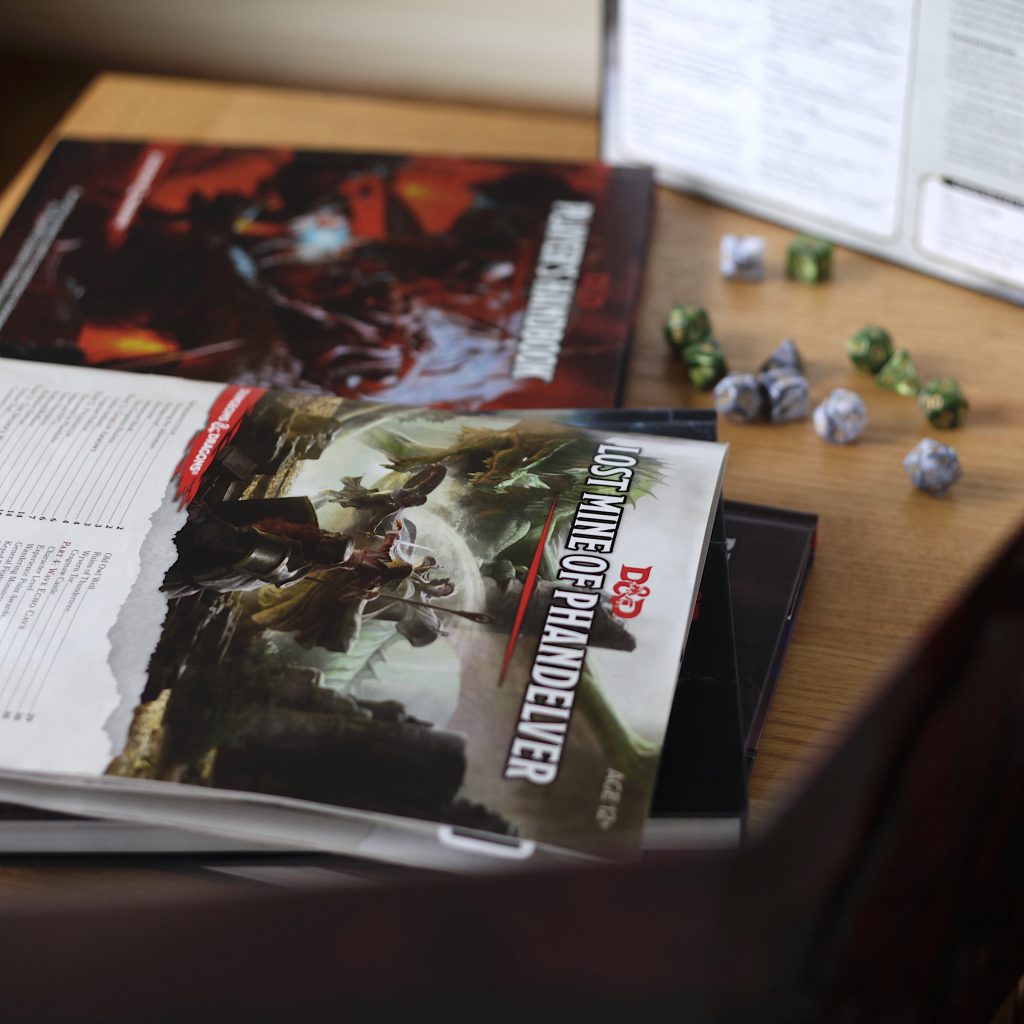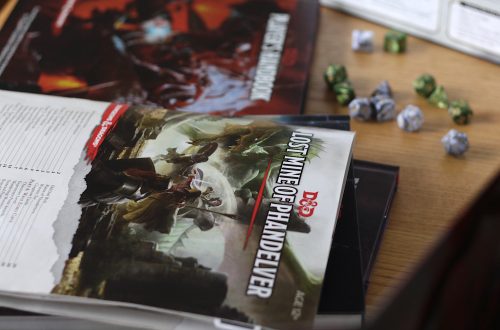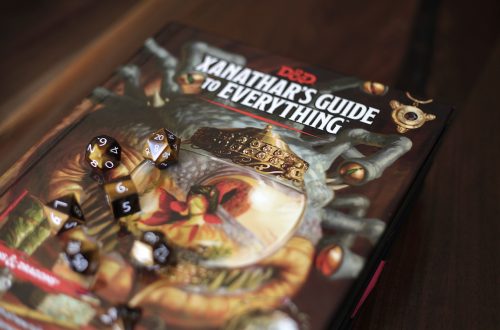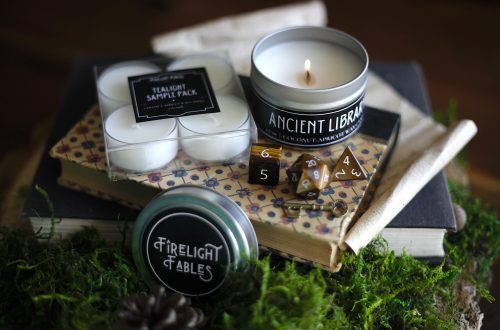The D&D Feats Guide You Need to Read
Hey there! This website does contain affiliate links. If you purchase something through this page, Cats and Dice may earn a share of sales from the link. Learn more.
One Monday evening, I took my Druid out for a spin to my friendly local game store. The adventure for the night? The Pudding Faire, a delightful adventure that put me and my fellow adventurers in a Groundhog Day situation.
The only problem? I kept rolling 1’s.
A seasoned Dungeons and Dragons player knows how frustrating that can be. (If you are unfamiliar, you can learn more about D&D dice here.) But here’s what was even more frustrating: my Druid is a Halfling. She was lucky all along!
Every D&D character has a class and race which come with special traits. They also have the ability to gain feats. D&D feats give your character extra flavor, along with extra abilities. If you don’t know what D&D feats are or how to give your character a feat, you need this guide.
What Are D&D Feats?
Reading the section on feats in The Player’s Handbook cleared everything up for me quickly. It is a short section (unlike other sections of the book) and took all of five minutes to understand. Here’s the gist of feats found on page 165:
“A feat represents a talent or an area of expertise that gives a character special capabilities. It embodies training, experience, and abilities beyond what a class provides.”
In other words, D&D feats allow you to customize your character beyond class or race in a way that suits your characters special talents. Your character will gain special abilities and it will enhance your roleplay.
Note, though, that feats and traits are two different things. The example of my Halfling Druid up above? That’s actually a racial trait. She, essentially, was “born lucky.” Feats, however, are specific to classes and sometimes require certain skill prerequisites in order to do them. If you wanted to be lucky without being a halfling, you would need to choose the Lucky feat.
(It is worth noting, though, that “Racial Feats” are an option thanks to Xanathar’s Guide to Everything. Keep reading for more information.)
These are also different from features. I know, feats, feet, and features sound the same, but they’re actually different. Features come with every class, whereas feats can cross classes. For example, every wizard uses 1d8 as a feature to level up, but not every wizard has the Keen Mind feat.
Furthermore, feats are chosen in place of features. As The Player’s Handbook states (again, on page 165):
“At certain levels, your class give you the Ability Score Improvement feature. Using the optional feats rule, you can forgo taking that feature to take a feat of your choice instead.”
So when do you get feats in 5e? Most character classes can choose feats at levels 4, 8, 12, 16, and/or 19. These are the standard levels for ability score increases. At level 4, for example, Druids can increase an ability score by 2 or two ability scores by 1. With the optional feat rule, a Druid’s third option is to choose a feat.
Many players ask if you start with a feat at level 1 in 5e. Again, it depends on your Dungeon Master. Since the official rules state that you can only gain feats when you reach the Ability Score Improvement feature, then technically the answer is no. However, plenty of Dungeon Masters will allow their players to start with a feat since that’s when your character gains ability scores in the first place.
Why choose a feat over a feature? The simple answer is that most feats give you the same benefits of features, plus some additional ones. In other words, most feats increase an ability score anyway. Why not get an extra benefit along with your increased score? Furthermore, a feat might enhance an ability you already have to your benefit.
Feats also give extra flavor to your character. D&D feats can enhance your roleplay as you’ll see below. So a feat can give you more in terms of gameplay than a standard ability score increase.

Finding D&D 5e Feats
Whether you already have a sense of the type of feat you would like to choose or you simply want to understand feats better, you will want the right resources to do so. You can find official D&D feats in The Players Handbook, Xanathar’s Guide to Everything, and Tasha’s Cauldron of Everything.
If you’d like to add unique, unofficial D&D 5e feats to your homebrew game, check out feats available through the Dungeon Master’s Guild such as this Compendium of Feats bestseller or Feats Don’t Fail Me Now with 40 feats for 5e.
Choosing Your Character’s Feats
First and foremost, before you can choose D&D feats, you must make sure your Dungeon Master allows them. Many do, but because feats are considered an optional rule, you will want to check. It’s easy enough to reverse if your DM does not allow them, but you won’t want to become invested without knowing!
Second, note that you can only choose a feat once. In other words, you can not get the same benefit multiple times.
When it comes time to choose a feat, you can go about it in one of two ways. First, you can choose by the type of feat you’d like to have. Second, you can rule out the feats your character cannot have. Both of these methods work together.
Feats come in several different unofficial “types.” Others may organize them differently, but you might think of them in the following categories:
- Attack Feats
- Defensive Feats
- Health Feats
- Spell (or Magic) Feats
- Roleplaying Feats
- Racial Feats
Make sure you use some or all of the resources from the “Finding Feats” section to have a full range of D&D 5e feats to choose from.
Attack Feats
These feats help you when it comes to fighting and hitting enemies. Examples of these feats include Weapon Master, Crossbow Expert, and Dual Wielder. Generally speaking, they allow you to ignore the standard rules for certain weapons or give you a benefit you normally wouldn’t have when attacking.
Defensive Feats
In contrast to attack feats, defensive feats give you extra protection in combat. Defensive feats include Lightly Armored, Moderately Armored, and Heavily Armored. Most defensive feats give you the ability to use armor you normally cannot or help shield you in some other way.
Health Feats
These feats give you protection or aid in times of poor health for your character or other characters. Examples of health feats include Healer, Durable, and Resilient. These spells help keep you healthy or restore health.
Spell Feats
Feats involving magic fall under spell feats. These include feats such as Magic Initiate, Spell Sniper, and War Caster. These are often used in combat as well, and most of them require the ability to cast spells. Tasha’s Cauldron of Everything has added a few more magical feat options including Fey Touched and Metamagic Adept.
Roleplaying Feats
These feats do not require roleplay to choose them. Instead, roleplaying feats often enhance roleplaying choices a player might make. Examples of this feat type include Inspiring Leader, Tavern Brawler, and Actor. These feats often enhance an ability you would use outside of combat, such as ability checks, rather than those within combat.
Racial Feats
Racial feats fall into all the categories above. That means that a racial feat can also be a roleplaying feat or a spell feat. However, it has an additional requirement on top of the requirements mentioned earlier. Racial feats can only be gained by certain races. Bountiful Luck, for example, is unique to Halflings. Only Dwarves can acquire Squat Nimbleness as a feat. So if your character does not meet the racial requirements of a racial feat, then they cannot have that feat. Read more about these unique feats in Xanathar’s Guide to Everything.
Narrowing Down Your Feats Options
Once you have a sense of the type of feat you would like to gain, you can narrow it down quite easily. First, you can rule out any feat you do not meet the prerequisite for. If a feat has a prerequisite, it will say so in italics below the name of the feat. Prerequisites usually involve a certain skill level or the ability to cast spells.
Next, you can rule out feats that may not help you. For example, if you are looking for a defensive feat and are not yet adept with light armor, you cannot choose the Moderately Armored feat. However, if that’s a feat you would like to have in the future, you can choose the Lightly Armored feat in preparation of the Moderately Armored one later on.
For more information on feats, check out this awesome video guide from Handbooker Helper and the Critical Role team.
What is your favorite D&D feat and why? Let us know in the comments!
Hi there! I’m Kristen. I’m a game writer, a Dungeon Master, and like you, I love tabletop games. Visit our About page to learn more about me.
I wrote this Cats and Dice article to help you enjoy gaming even more. Did it help? If so, our kitties (and our site) would be grateful for a little gift through Ko-Fi.




